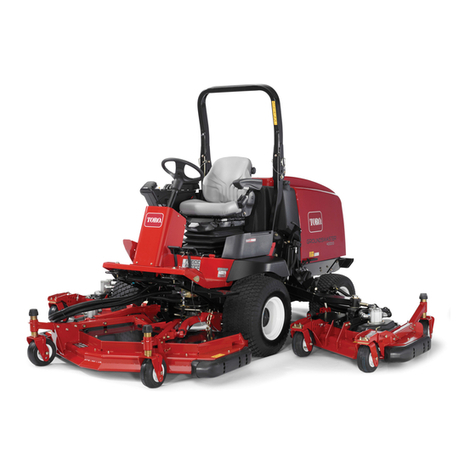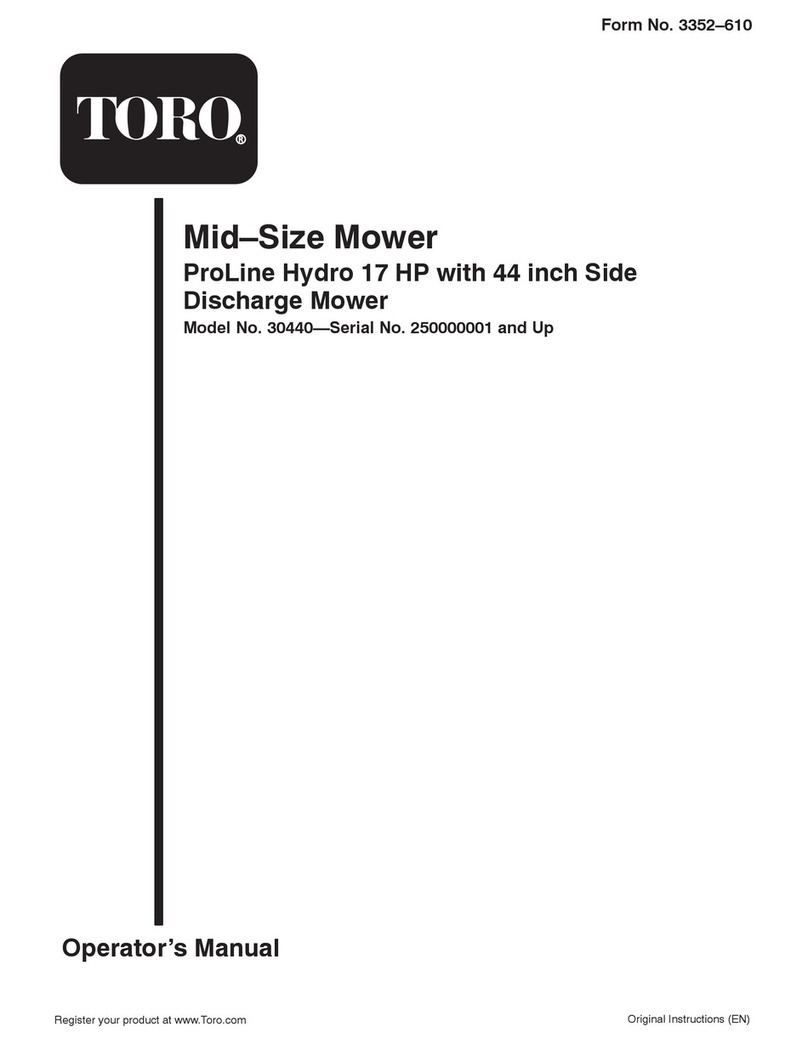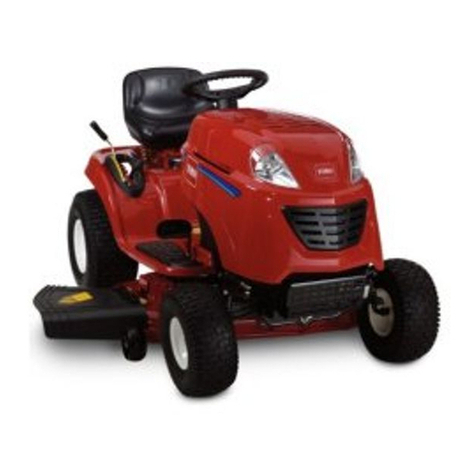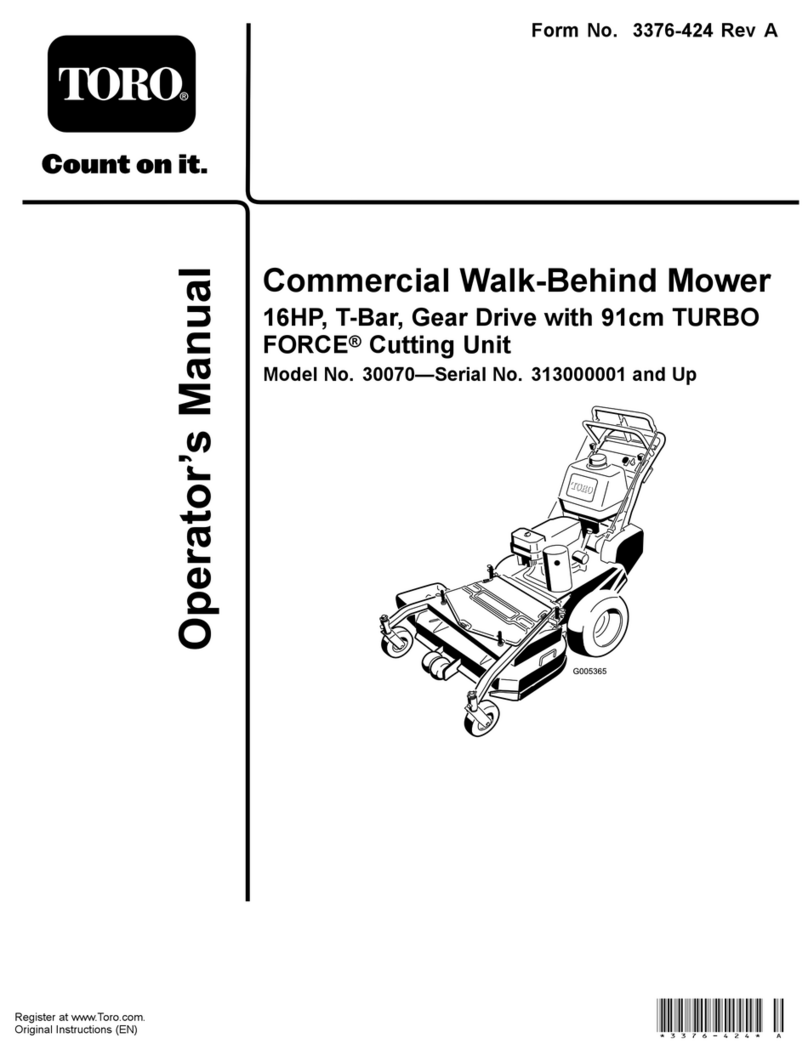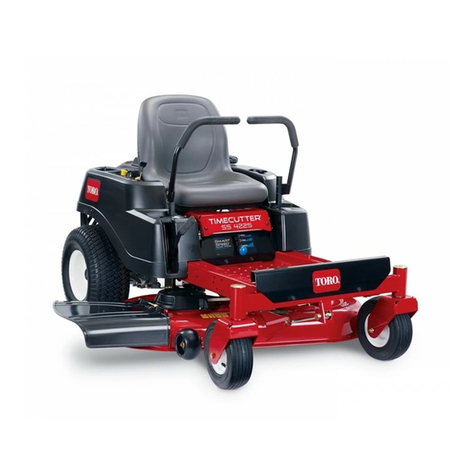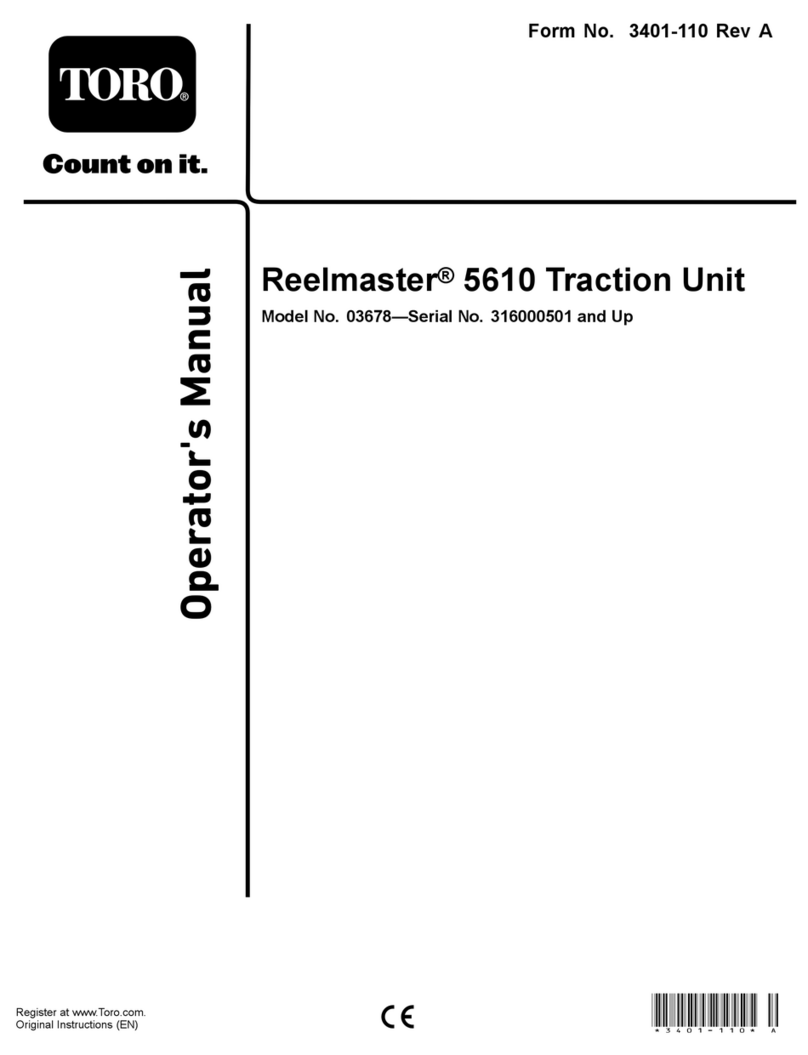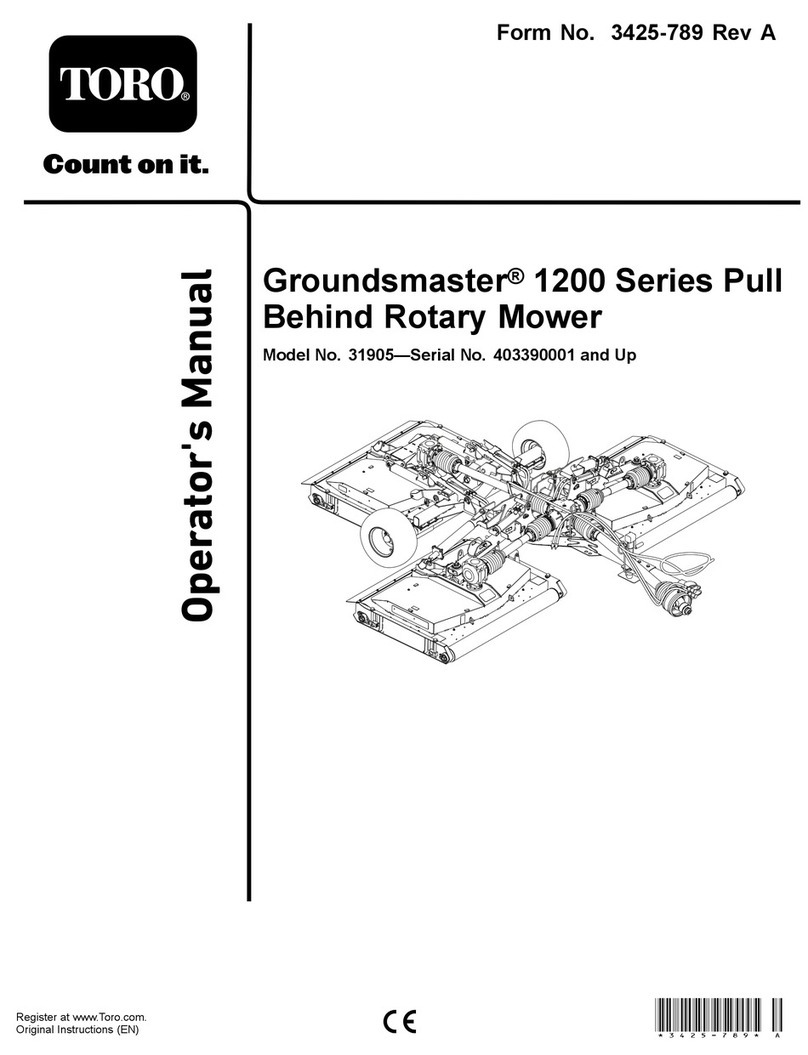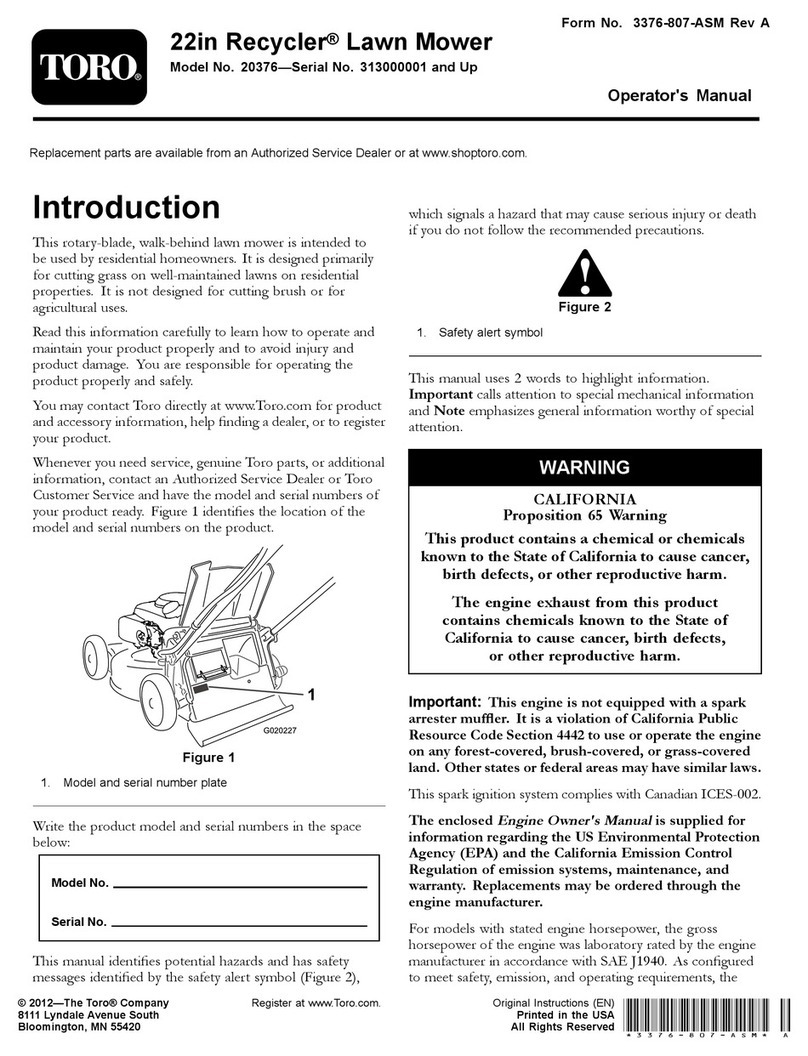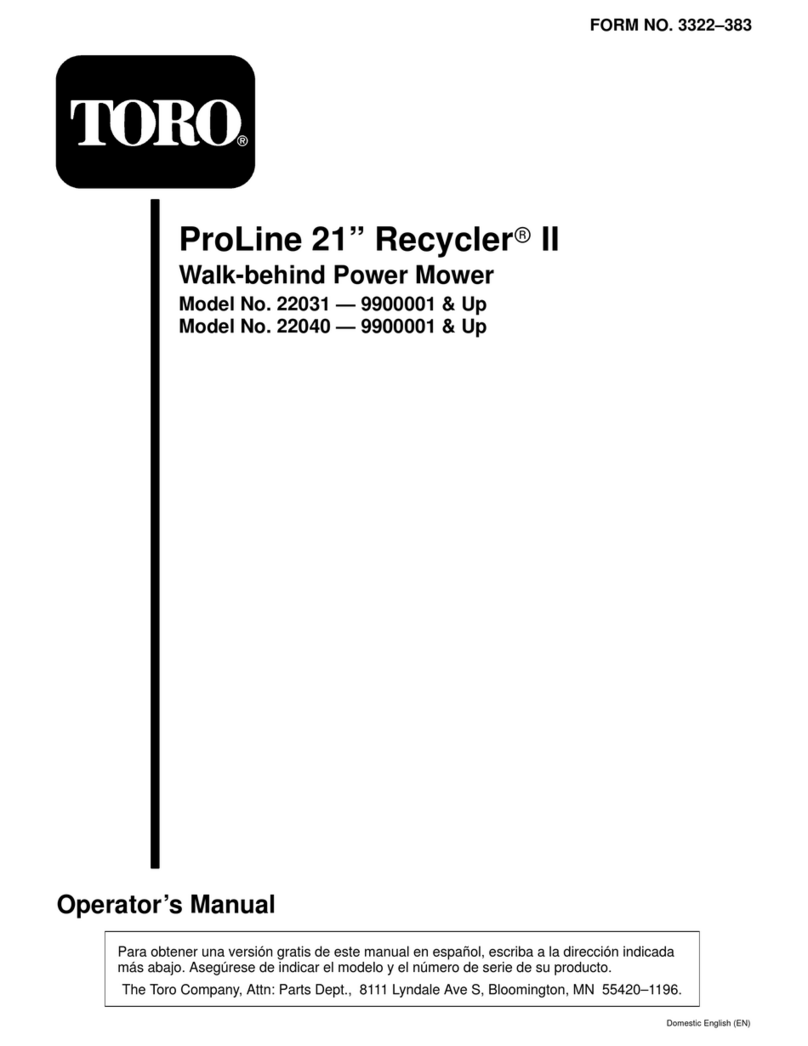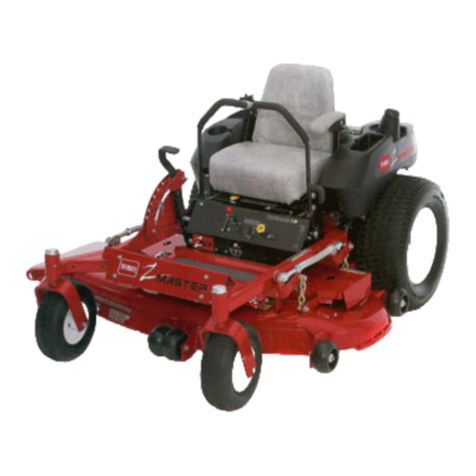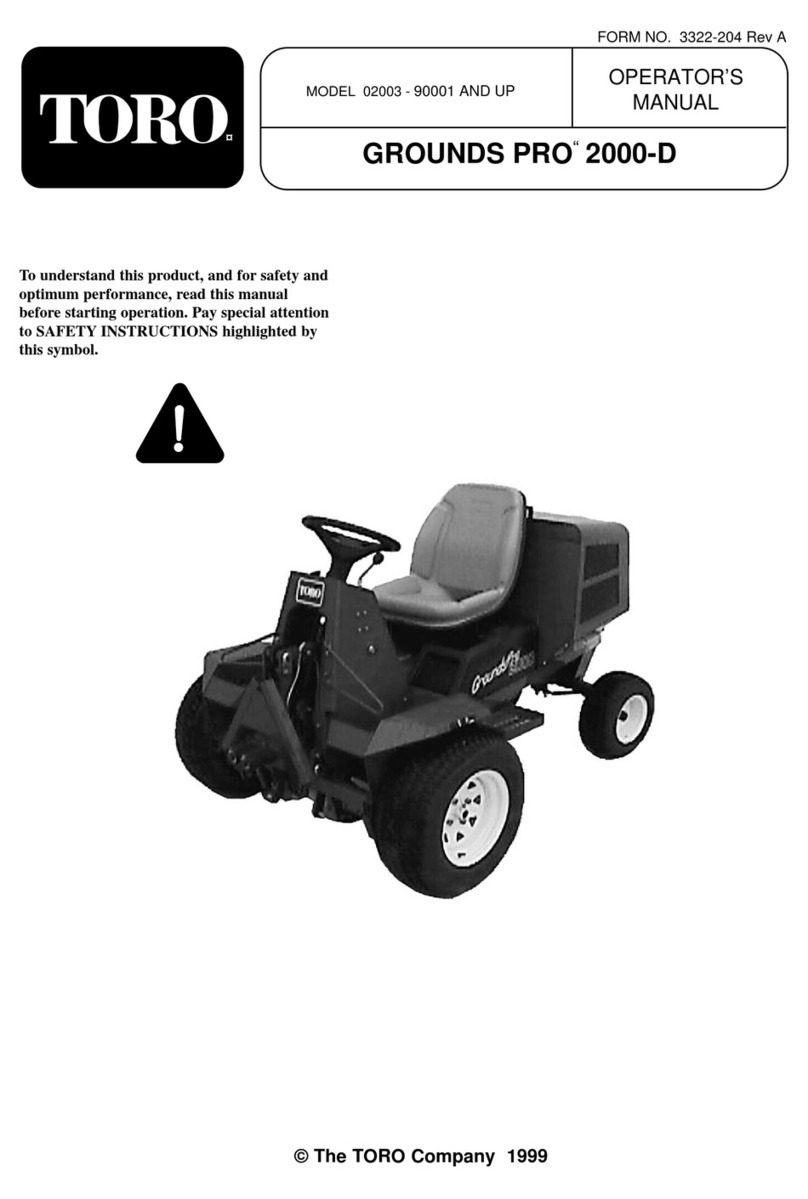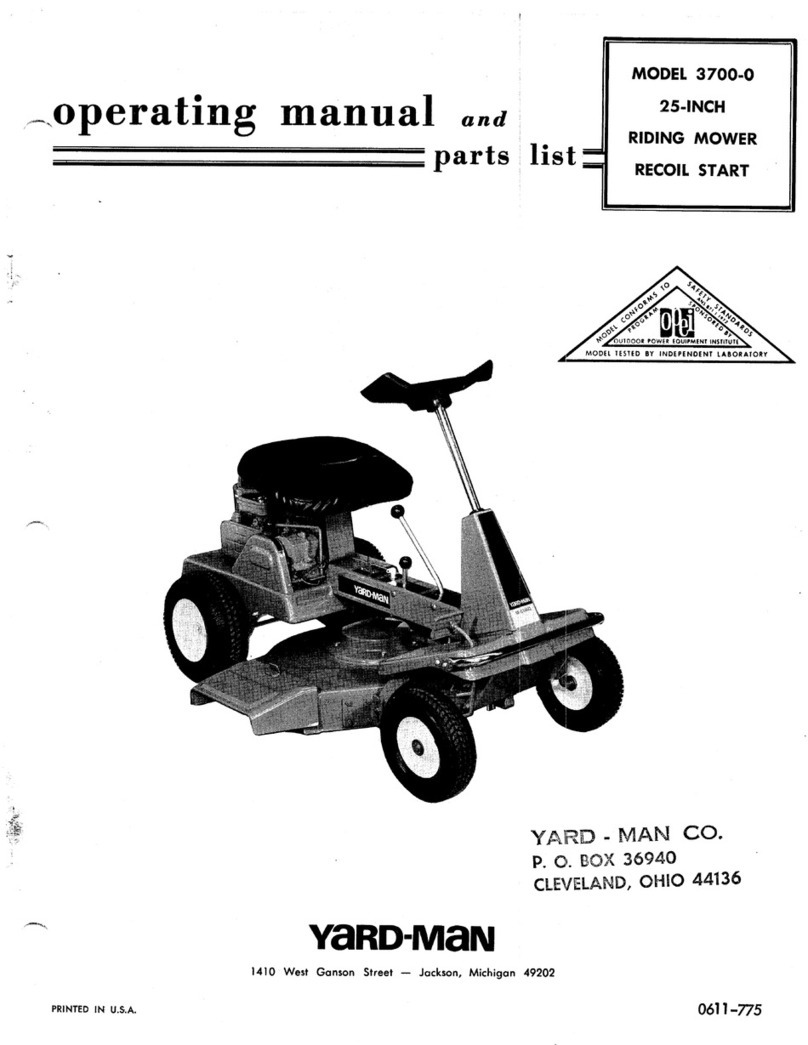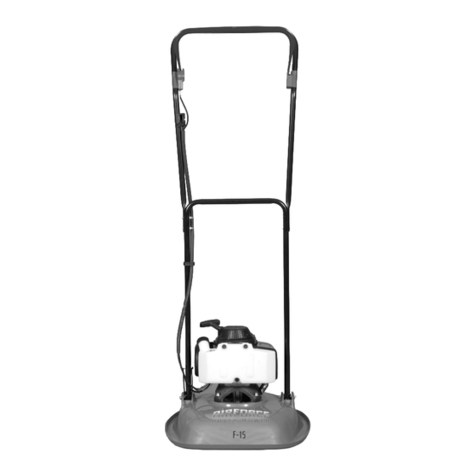
5
SAFETY INSTRUCTIONS
20. The slope angle at which the machine will tip is
dependent on many factors. Among these are mowing
conditions such as wet or undulating turf, speed
(especially in turns), position of the cutting units (with
sidewinder), tire pressure and operator experience. At
side hill slope angles of 20 degrees or less the risk of a
rollover is low. As the slope angle increases to a Toro
recommended maximum limit of 25 degrees the risk of
a rollover increases to a moderate level. DO NOT
EXCEED A 25 DEGREE SIDE HILL ANGLE
BECAUSE THE RISK OF A ROLLOVER AND
SERIOUS INJURY OR DEATH IS VERY HIGH. The
Reelmaster 3100 is equipped with an angle indicator,
mounted on the steering tube, which indicates the side
hill angle the machine is operating on and identifies the
recommended maximum limit of 25 degrees.
Stay alert for holes in terrain and other hidden hazards
which can cause a sudden change in side hill angle.
Use extreme caution when operating close to sand
traps, ditches, creeks, steep hillsides or other hazards.
Reduce speed when making sharp turns. Do not turn
on hills. Avoid sudden stops and starts. Use reverse
pedal for braking. Cutting units must be lowered when
going down slopes for steering control.
21. When starting the engine:
A. Engage parking brake.
B. Be sure traction pedal is in neutral and reel
drive is in disengage position.
C. After engine starts, release parking brake and
keep foot off traction pedal. Machine must not
move. If movement is evident, the neutral control
linkage is incorrectly adjusted: therefore, shut
engine off and adjust until machine does not move
when traction pedal is released. Refer to Adjusting
Transmission for Neutral.
22. This product may exceed noise levels of 85 dB(A)
at the operator position. Ear protectors are
recommended for prolonged exposure to reduce the
potential of permanent hearing damage.
23. Raise the cutting units when driving from one work
area to another.
24. Do not touch engine, muffler, exhaust pipe or
hydraulic tank while engine is running or soon after it
has stopped because these areas could be hot
enough to cause burns.
25. If a cutting unit strikes a solid object or vibrates
abnormally, stop immediately. Turn engine off, wait for
all motion to stop and inspect for damage. A damaged
reel or bedknife must be repaired or replaced before
operation is continued.
26. Before getting off the seat:
A. Move traction pedal to neutral.
B. Set the parking brake.
C. Disengage the cutting units and wait for the
reels to stop spinning.
D. Stop the engine and remove key from the
ignition switch.
27. Whenever machine is left unattended, make sure
reels are not spinning, key is removed from ignition
switch and parking brake is set.
MAINTENANCE
28. Before servicing or making adjustments to the
machine, stop the engine and remove key from switch
to prevent accidental starting of the engine.
29. Check performance of all interlock switches daily.
Do not defeat interlock system. It is for your protection.
30. To ensure entire machine is in good operating
condition, frequently check and keep all nuts, bolts,
screws and hydraulic fittings tight.
31. Make sure all hydraulic line connectors are tight,
and all hydraulic hoses and lines are in good condition
before applying pressure to the system.
32. Keep body and hands away from pin hole leaks or
nozzles that eject hydraulic fluid under high pressure.
Use paper or cardboard, not hands, to search for
leaks. Hydraulic fluid escaping under pressure can
have sufficient force to penetrate skin and do serious
damage. lf fluid is injected into the skin it must be
surgically removed within a few hours by a doctor
familiar with this form of injury or gangrene may result.
33. Before disconnecting or performing any work on
the hydraulic system, all pressure in system must be
relieved by stopping engine and lowering cutting units
to the ground.
34. If major repairs are ever needed or if assistance is
desired, contact an Authorized Toro Distributor.
35. To reduce potential fire hazard, keep the engine
area free of excessive grease, grass, leaves and
accumulation of dirt.
36. If the engine must be running to perform a
maintenance adjustment, keep hands, feet, clothing,
and any other parts of the body away from the cutting
units and any moving parts. Keep everyone away.
37. Do not overspeed the engine by changing
governor settings. To assure safety and accuracy, have
an Authorized Toro Distributor check maximum engine
speed with a tachometer.
38. Engine must be shut off before checking oil or
adding oil to the crankcase.
39. To insure optimum performance and safety, use
genuine TORO replacement parts and accessories.
Replacement parts and accessories made by other
manufacturers could be dangerous, and such use
could void the product warranty of The Toro Company.



